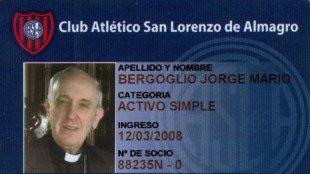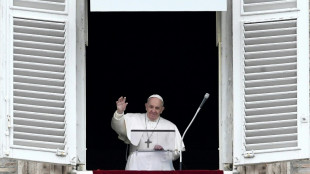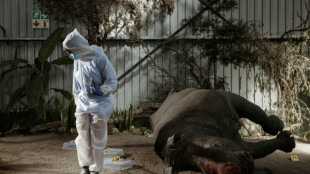

Suits and signet rings: Charles's fashion through the ages
Whether a bespoke three-piece suit or the waxed jacket of the upper-class rural set, Charles's characteristic style has rarely strayed from the predictable during his decades in the public eye.
But his sartorial flair did earn him the title of world's best-dressed man -- an honour he laughed off as unlikely.
The new king's clothes and shoes are made by the best in the land.
Charles, whose spending has long been criticised, is said to own hundreds of classically cut suits, many from Anderson & Sheppard on London's Savile Row.
An army of valets oversees his wardrobe changes, often several times a day, and according to a recent biography, one of them is even in charge of keeping his shoelaces well-pressed.
Esquire magazine in 2009 named Charles as the world's best-dressed man, although the man himself joked that it was just a way to sell more copies.
At a London Fashion Week reception in 2012, he described his style as, in some respects, timeless.
"I have lurched from being the best-dressed man to being the worst-dressed man," he said.
"Meanwhile, I have gone on -- like a stopped clock -- and my time comes around every 25 years."
- Shorts, ties and traditional dress -
Childhood photographs of Charles show him in shorts but also in a tie, sometimes a blazer and while in Scotland, in a kilt with knee-high socks.
As a young man, he opted for a sportier look, including polo shirts, and has been keen to accessorise, with sunglasses, cufflinks and even a matching neck tie over a ski suit.
Charles wears a signet ring on his little finger and has always had the same impeccable side parting.
He has also readily embraced local traditions while on overseas travels, particularly different headgear.
In Saudi Arabia in 2014, he wore traditional dress while trying his hand at sword dancing.
And in Ghana in 1977, he wore a striped tribal outfit. In 2010, on a visit to Afghanistan, he wore camouflage fatigues while visiting troops.
But Charles draws the line at lycra: in June 2021, he sported a tan blazer, chinos, tie and suede shoes to cycle to a charity fundraiser.
"It's a nightmare getting into it," he said of the tight-fitting stretchy sportswear when presented with a cycling jersey.
- Uniforms and sustainability -
Now in his 70s, Charles often wears double-breasted suits with a silk pocket square setting off a tie.
At his Highgrove estate in Gloucestershire, western England, he cultivates the look of a gentleman farmer, hands buried deep in the huge pockets of a Barbour waxed jacket.
On special occasions, such as appearances on the balcony of Buckingham Palace or when meeting the regiments that he heads, military uniform is de rigueur.
For his 60th birthday portrait, he wore the red ceremonial uniform of the Welsh Guards, with medals on his chest and a golden sword on his belt.
In recent years, Charles has been eager to burnish his environmental credentials, explaining that he does not like to throw out his old clothes.
For his younger son Harry's 2018 wedding to Meghan Markle, he wore a pearl-grey frock coat from 1984.
"As long as I can go on getting into it, I only wear it a few times a year, in the summer, so obviously you want to keep those sorts of things going," he told Vogue.
"But if I can't fit into them, then I just have to have something new made. But I'm not sure quite how radically different they can be at my age."
He has also been seen wearing the same two coats -- one double-breasted tweed and the other camelhair -- for years.
"His tailors keep large pieces of fabric, to eventually repair them," explained Michel Faure, who has written a biography on Charles.
In 2020, Charles backed a new sustainable menswear and womenswear range supported by his charitable foundation, with clothes made from natural fibres, including cashmere, wool and organic silk.
They are designed to last a lifetime, with profits going to support the foundation's training programme and to help preserve traditional skills.
"It seems utter madness to have this approach which takes, makes and throws away," he said.
喬-H.Qiáo--THT-士蔑報




